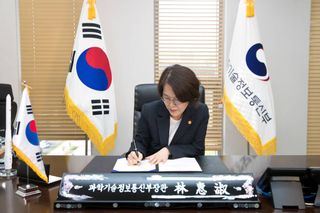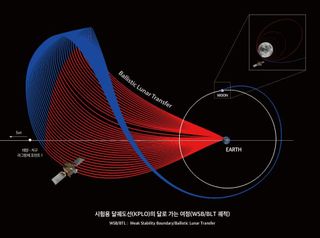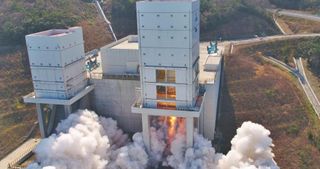South Korea signs Artemis Accords, aims for moon by 2030

South Korea has joined NASA's moon-exploration coalition.
South Korea became the 10th country to sign the Artemis Accords, a set of principles laying out the responsible exploration of the moon, on May 24 during a ceremony in Seoul. The Accords take their name from NASA's Artemis program, which aims to establish a sustainable human presence on and around the moon by the end of the 2020s.
"I am thrilled the Republic of Korea has committed to the Artemis Accords. Their signature demonstrates the strong momentum worldwide in supporting our moon-to-Mars exploration approach," NASA Administrator Bill Nelson said in a statement.
Moon master: An easy moon quiz for lunar lunatics

The United States, Australia, Canada, Italy, Japan, Luxembourg, Ukraine, the United Kingdom and the United Arab Emirates had all earlier signed the Accords, while South Korea became the first country to sign up during the administration of President Joe Biden.
South Korea's interest in the moon has grown greatly in recent months, with South Korean president Moon Jae-in declaring in March that the East Asian nation aims to send its own lander to the moon by 2030.
Under the plans, the Republic of Korea, the official name for South Korea, would use a domestically developed rocket to launch the robotic lunar lander, SpaceNews reported.
Get the Space.com Newsletter
Breaking space news, the latest updates on rocket launches, skywatching events and more!
"We will actively push for challenging space exploration projects that build on the foundation achieved by developing a Korean launch vehicle," Moon said. "By 2030, we will achieve our dream of landing on the moon by using our own launch vehicle. The technological prowess, experience and confidence that will be gained from exploring the moon, the first step in space exploration, will provide a solid foundation for space development."
President Moon also announced the beginning of a feasibility study for a mission to study the near-Earth asteroid Apophis.

Few details regarding the lunar landing mission are currently available, and the Korea Aerospace Research Institute (KARI) did not respond to a request for comment.
The country is, however, working on a three-stage liquid rocket known as the Korea Space Launch Vehicle, or Nuri. A first flight is currently planned for October this year.
KARI is developing the Korea Pathfinder Lunar Orbiter (KPLO) for launch on a SpaceX Falcon 9 rocket in August 2022 as part of the country's lunar exploration plans. KPLO will carry a 15-foot (5 meters) resolution camera, a wide-field polarized camera, a magnetic field sensor, a gamma ray sensor and space internet test payload, all developed by South Korea.
A sixth payload, ShadowCam, will be provided by NASA to observe reflectance from permanently shadowed regions to map possible water ice deposits.
Follow us on Twitter @Spacedotcom and on Facebook.
Join our Space Forums to keep talking space on the latest missions, night sky and more! And if you have a news tip, correction or comment, let us know at: community@space.com.

Andrew is a freelance space journalist with a focus on reporting on China's rapidly growing space sector. He began writing for Space.com in 2019 and writes for SpaceNews, IEEE Spectrum, National Geographic, Sky & Telescope, New Scientist and others. Andrew first caught the space bug when, as a youngster, he saw Voyager images of other worlds in our solar system for the first time. Away from space, Andrew enjoys trail running in the forests of Finland. You can follow him on Twitter @AJ_FI.
